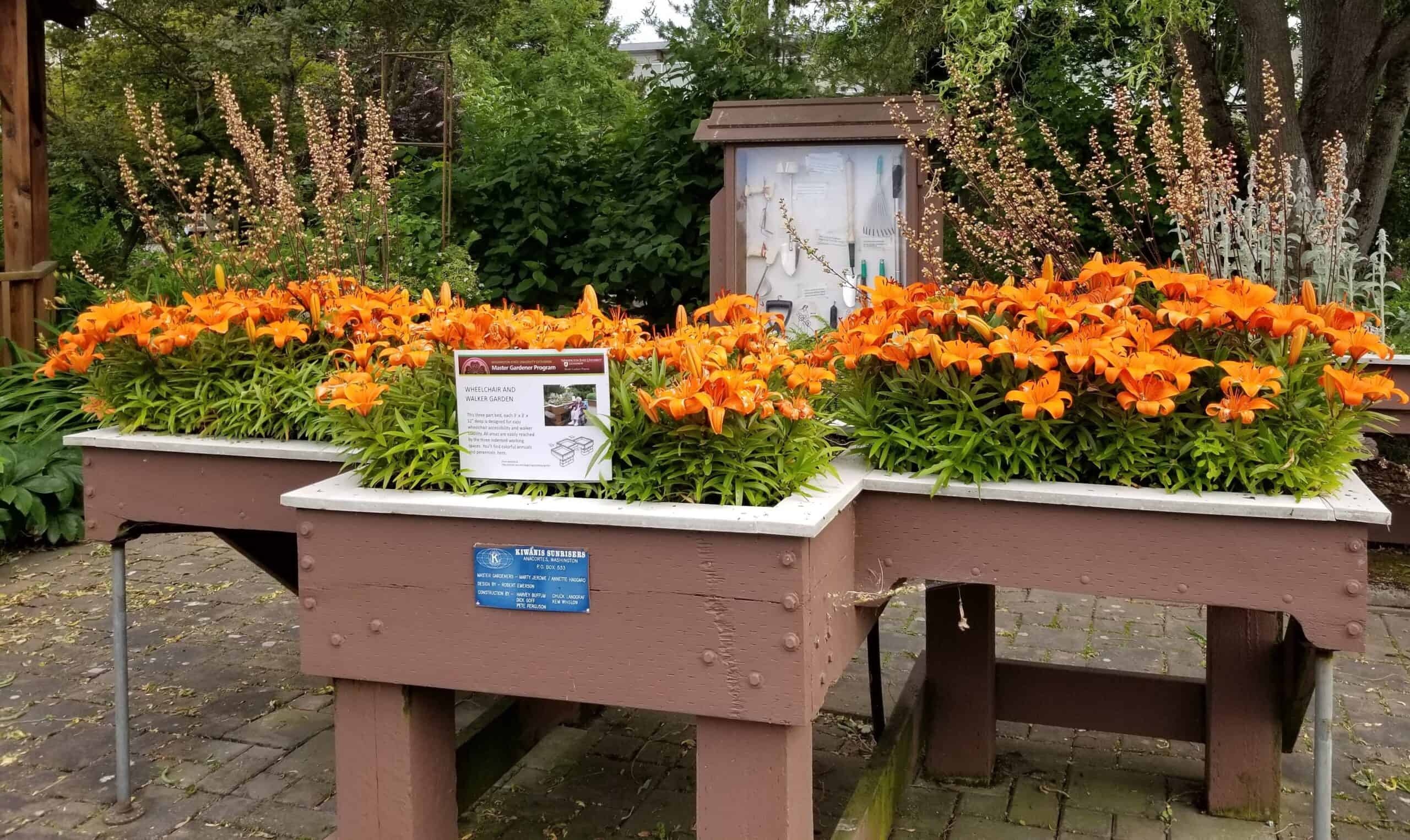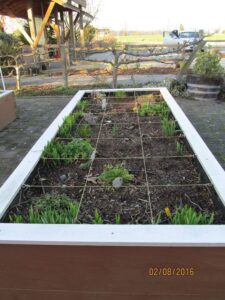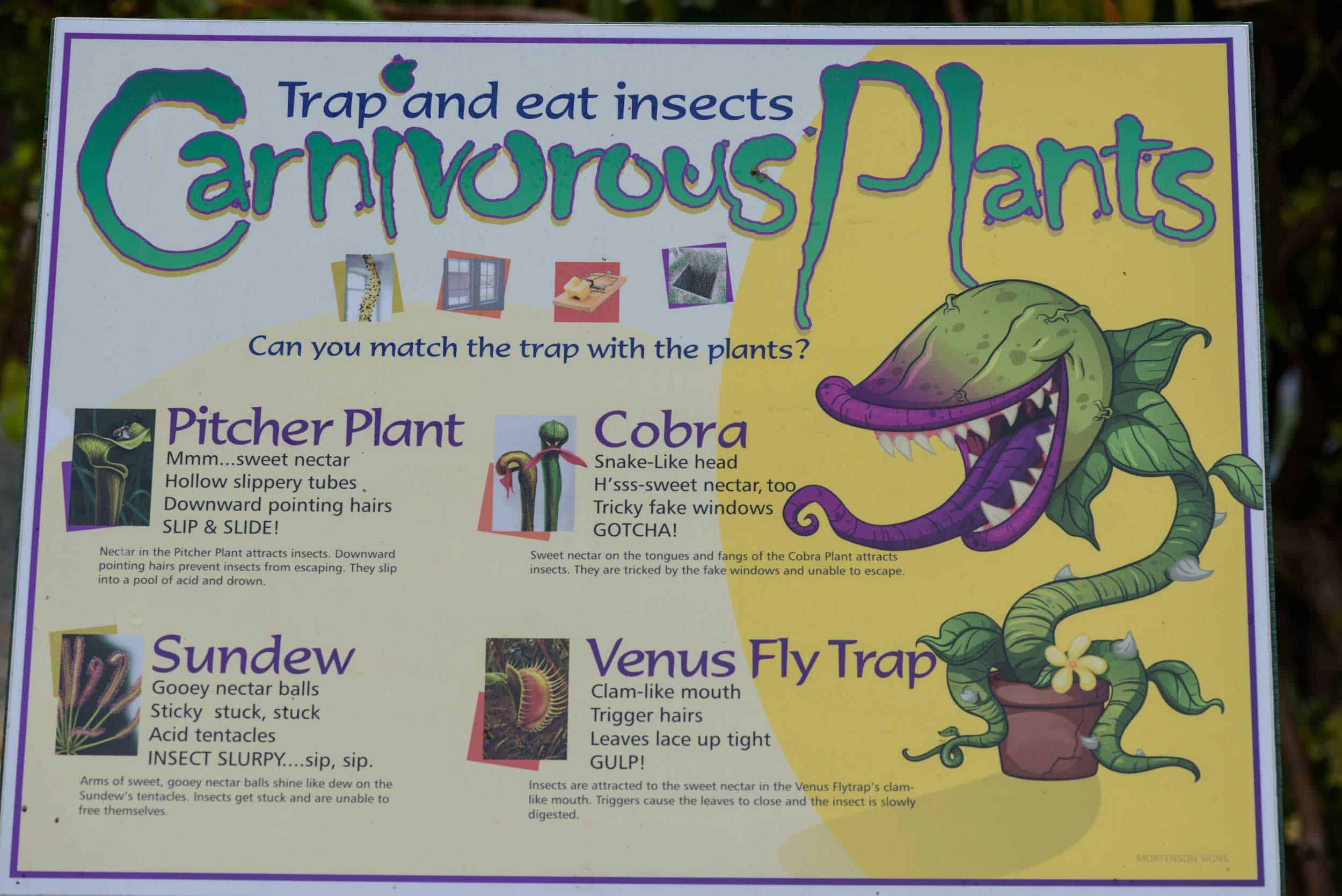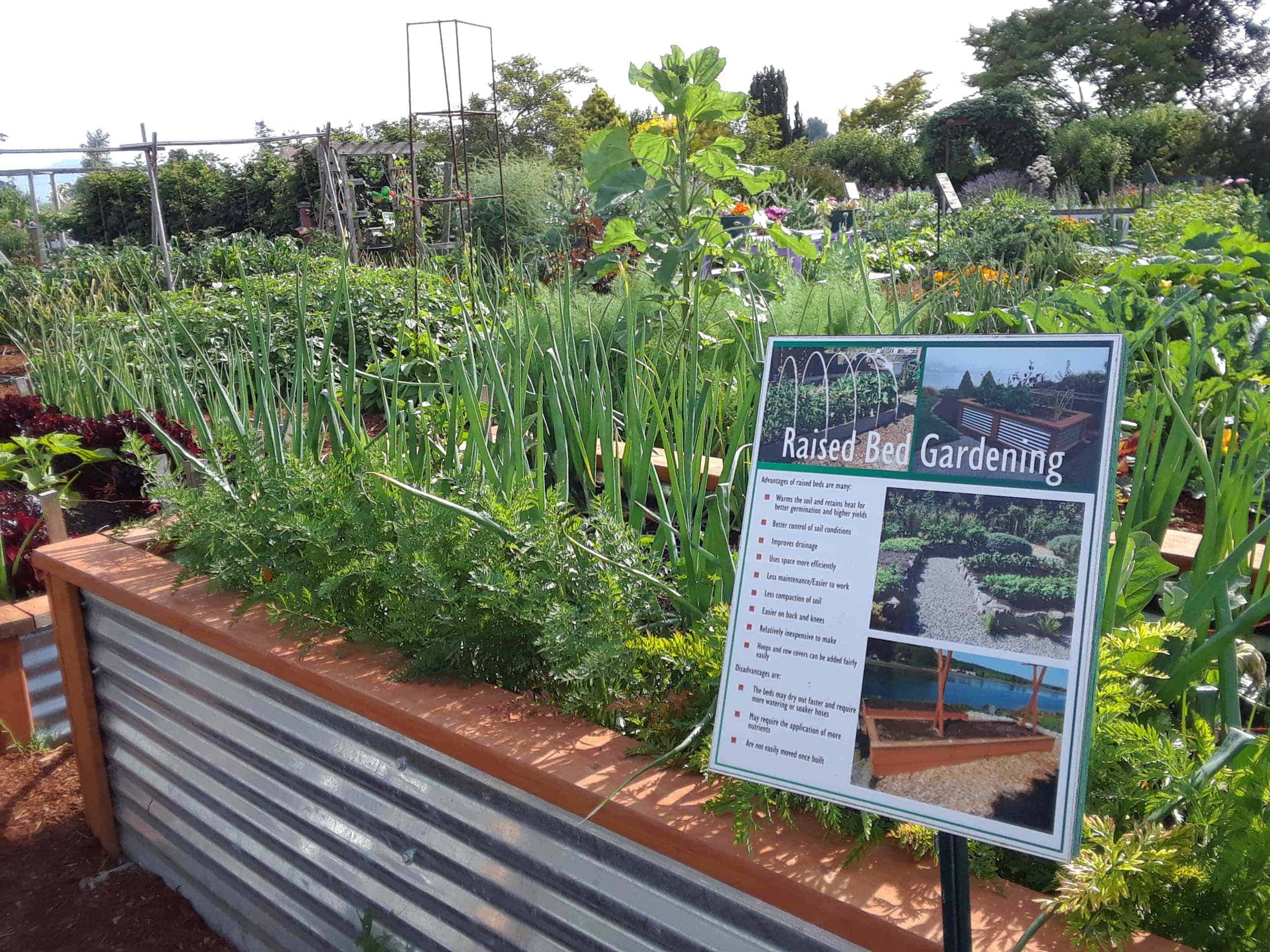Return to Garden Rooms List
One of our most popular gardens in our Discovery Garden is our Enabling Garden. The enabling garden has special features to help people with mobility or visual difficulties:
◦ Paved ground
◦ 6 Raised beds at different heights
◦ Sitting ledges
◦ Low espalier apple trees
◦ Square foot gardening
The six raised beds and ergonomic tool display illustrate ways to garden for those with limited strength, energy and physical ability. Scented, colorful, textured plants are featured in the raised beds, some of which offer sitting ledges.



Master Gardeners have had many requests for plans or suggestions for “how to do this at home.”
Enabling Garden Projects and Plans
These plans are for building permanent structures for a public garden, such as the Discovery Garden. Another option for home owners is to purchase a raised bed garden kit, available at garden centers.
Click on the titles to access the plans for each garden.
 Lattice Garden
Lattice Garden
This 8′ x 4′ x 1′ bed with lattice down the center provides two easily reachable sections. The lattice can support perennials or vegetables.
 Sitting Ledge
Sitting Ledge
This 8′ x 4′ x 2′ bed with a sitting ledge along the sides provides a comfortable working height, especially for bad backs and an easy reach from each side.
 Visually Impaired Garden
Visually Impaired Garden
This 8′ x 4′ x 33″ table-bed is designed for wheelchairs to fit under. The planting design is to assist the visually impaired to locate the central focus of interest. Extremely colorful plants should be fragrant and/or textured.
 Wheelchair and Walker Garden
Wheelchair and Walker Garden
This 8′ x 4′ x 33″ table is designed for easy wheelchair accessibility and walker stability. All areas are easily reached by the three indented working spaces.
 Log Sides
Log Sides
This 8′ by 4′ x 18″ bed can be constructed to any comfortable height. The logs are fastened together with rebar. For a greenhouse cover use 1/2″ PVC pipe as shown in the picture.
 Square Foot Raised Garden
Square Foot Raised Garden
This 8′ x 4′ x 2′ bed is divided into 1′ sections for intensive, continual harvest planting which limits weeding, thinning and most physical exertion. The garden can easily be managed with a trowel.
The Enabling Garden has a special garden for the visually impaired: The stones are to assist people who don’t see well to locate the plants –all of which have a different feel.


The Enabling Garden hosts the Carnivorous Plant Display

Yellow trumpet plant: attracts bees to pollinate the flowers. After flowers drop off, the pitcher grows tall and opens up. Insects are attracted to the nectar, drink it and get drunk, and slip down to the bottom where they get dissolved- pitfall!
Purple Pitcher plant: shorter, top is wide open. Insects are attracted to the nectar. They can go down but not up because of downward pointing hairs. They slip down and drown!
Cobra plant: snake like head with a tongue. Fake windows along the neck draw the insects down to the light and they can’t go back up because of the downward pointing hairs. They drown at the bottom!
Sundew: glistening balls attract insects but the balls are sticky and they get stuck! There is acid in the balls that dissolve the insects.
Venus flytrap: nectar inside attracts insects. If an insect touches the hairs inside, the two leaves snap shut and trap it!



The same Yellow Pitcher (Sarracenia) plant mid summer with the pitchers open.
Other Enabling Ideas
While strolling through the Discovery Garden, check out our crushed gravel trails and the Vegetable Garden raised beds for additional inspiration to incorporate in your personal enabling garden.

More Resources
Read this great article titled Ergonomic Tools & Methods by a Master Gardener that was published in the Skagit Valley Herald.
Also check out a Master Gardener written article on Gardening with Raised Beds. Here are the resource files: Construction Instructions – Materials List – Raised Bed Diagram
WSU Extension Publications “Gardening for Life” is a great resource for senior gardeners and gardeners with disabilities. Click here to read.
Enabling Garden Plant List
| # | Botanical Name | Cultivar | Common Name | Tree | Native |
|---|---|---|---|---|---|
| 1 | Cercis canadensis | 'Ruby Falls' | weeping eastern redbud | T | |
| 2 | Euonymus fortunei | 'Emerald 'n Gold' | winter creeper | ||
| 3 | Hakonechloa albovarigata | Japanese forest grass | |||
| 4 | Carex oshimensis | 'Evergold' | sedge grass | ||
| 5 | Paeonia | ||||
| 6 | Lavendula | 'Anouk' | French lavender | ||
| 7 | Heuchera micrantha | 'Palace Purple' | coral bells | ||
| 8 | Lavatera arborea | tree mallow | |||
| 9 | Rosa rugosa | 'William Lobb' | shrub rose | ||
| 10 | Lonicera japonica | honey suckle | |||
| 11 | Stachys byzantina | lambs' ears | |||
| 12 | Hydrangea anomala | climbing hydrangea | |||
| 13 | Hemerocallis lilioasphodelus | lemon daylily | |||
| 14 | Fern | ||||
| 15 | Clematis | 'Vanso' Blue Light ® | clematis | ||
| 16 | Helleborus orientalis | 'Heritage Cherrywood' | lenten rose | ||
| 17 | Camellia japonica | 'Debutante' | |||
| 18 | Cersis canadensis | eastern redbud | T | ||
| 19 | Kerria japonica | Japanese rose | |||
| 21 | Erica erigena | 'Superba' | pink heath | ||
| 22 | Erica carnea | 'Springwood White' | winter heath | ||
| 23 | Malus | 'Evereste' | crabapple | T |